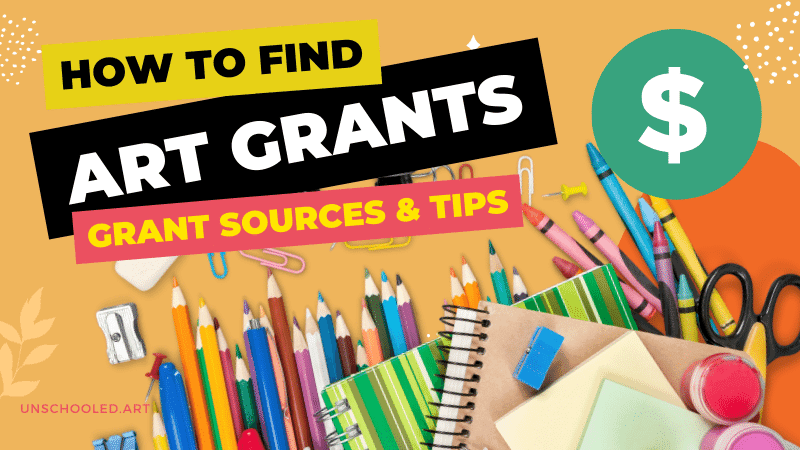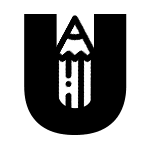Greetings, fellow art enthusiasts and dedicated art educators! As art teachers, we understand the vital role funding plays in providing our students with enriching art experiences. However, securing financial support for art programs can often feel like a daunting task. Today, let’s discuss ways to unlock art funding opportunities through art grant writing and receiving art grants. We will also explore best practices for securing art grants for your visual arts program. So, let’s dive in and discover the resources that can help bring your artistic vision to life!
Note: Before applying for any type of grant, make sure you have your school district’s approval.
Art Grants and Funding Programs
One of the most effective ways to secure financial support for your art programs is through grants and funding programs specifically designed to promote arts education. These grants can provide the necessary resources for art supplies, technology, professional development, and even artist residencies. Grants may come from corporations, non-profit organizations, local/federal government or even generous individuals.
I recommend that you start your search for an art grant provider at the local level. There is far less competition in your local community than with a statewide or nationwide art grant. Your own community has a larger stake in the education of your students. Start local and then work your way up. Does your local art festivals, art museums or art society offer any type of art grant or donations program? A community partner that works with your school system (such as a local bank or corporation)? Your district’s state representative? Your state’s Department of Education?
There are lots of smaller art grants that you can find by looking at your local community and the corporations that are operating there. In addition, there are state art organizations and national art organizations that provide grants to art educators. Here are a few ideas to get you started on your grant search:
- The National Endowment for the Arts (NEA): The NEA is a federal agency dedicated to supporting the arts across the United States. They offer a range of grant programs, including grants for arts education. Visit their website (arts.gov) to explore the different grant opportunities available and learn about their application process.
- Target Grants: Target offers grants to nonprofits and schools located in the communities surrounding their stores. Many of their grant programs are invite only, but there are smaller opportunities like their Target GiftCard Donations program. Accredited schools can visit any Target and ask for a GiftCard donation. Visit the Target corporate website (corporate.target.com) to learn more about their grant program and application requirements.
- Walmart’s Local Community Grants: Walmart grants are awarded through an open application process and provide funding directly from Walmart and Sam’s Club facilities to local organizations in the U.S. Currently the grants range from $250 to $5,000. Visit Walmart.org for more information on Walmart grants.
- DonorsChoose.org: DonorsChoose.org is a popular crowdfunding platform specifically designed for educators. You can create a project detailing your art program’s needs, and donors from around the country can contribute to support your cause. The platform also offers resources and tips on how to create a compelling project proposal to maximize your chances of success.
Build Strong Grant Proposals
To increase the likelihood of having your grant proposals accepted, it’s crucial to develop strong and compelling applications. Here are some foolproof tips and best practices:
- Clearly Define Your Goals and Objectives: When crafting your proposal, clearly outline the goals and objectives of your art grant. Demonstrate how your project aligns with the mission and priorities of the funding organization. Try to use compelling language to convey how your program will impact your students’ artistic growth and overall development.
- Provide a Detailed Budget: A well-structured budget is essential to demonstrate that you have carefully considered the financial aspects of your art program. Clearly outline how the grant funds will be allocated, providing specific cost estimates for art supplies, equipment, professional development, and any other relevant expenses. Be thorough and realistic in your budget planning. If you plan to have donations from secondary organizations or to have volunteers donate their time, be sure to include that in your budget.
- Support Your Proposal with Data & Research: Back up your proposal with research and data that highlight the importance of arts education. Cite studies, statistics, and testimonials that emphasize the positive impact of art on students’ academic performance, creativity, and social-emotional development. Include stats about your specific school (how many students are on free/reduced lunch, survey students about a grant-related topic and share the results, etc). This supporting evidence will strengthen your case for funding.
- Collaborate and Seek Partnerships: Collaboration with other teachers, community organizations, or local artists can enhance the quality and reach of your art program. Can you partner with your city’s public library? A local museum? Highlight any existing or potential partnerships in your grant proposal. Demonstrating a collaborative approach shows that your program has broader community support and increases its chances of being funded.
As art teachers, securing funding for our art programs is crucial to providing transformative experiences for our students. By exploring art grants and funding opportunities from corporations, local government or organizations like the NEA, we can find the financial support we need. Remember to craft strong grant proposals that clearly define your goals, provide detailed budgets, support your proposal with research, and seek collaborations. With these foolproof best practices, you’ll be well-equipped to navigate the land of grant writing.
Please, share any sources of art grants that you believe other art teachers would find helpful in the comments. Together, we can empower our students and nurture their creative potential! Good luck!
Got the art grant? See which art supplies I recommend for any elementary art class, here.


Leave a Reply